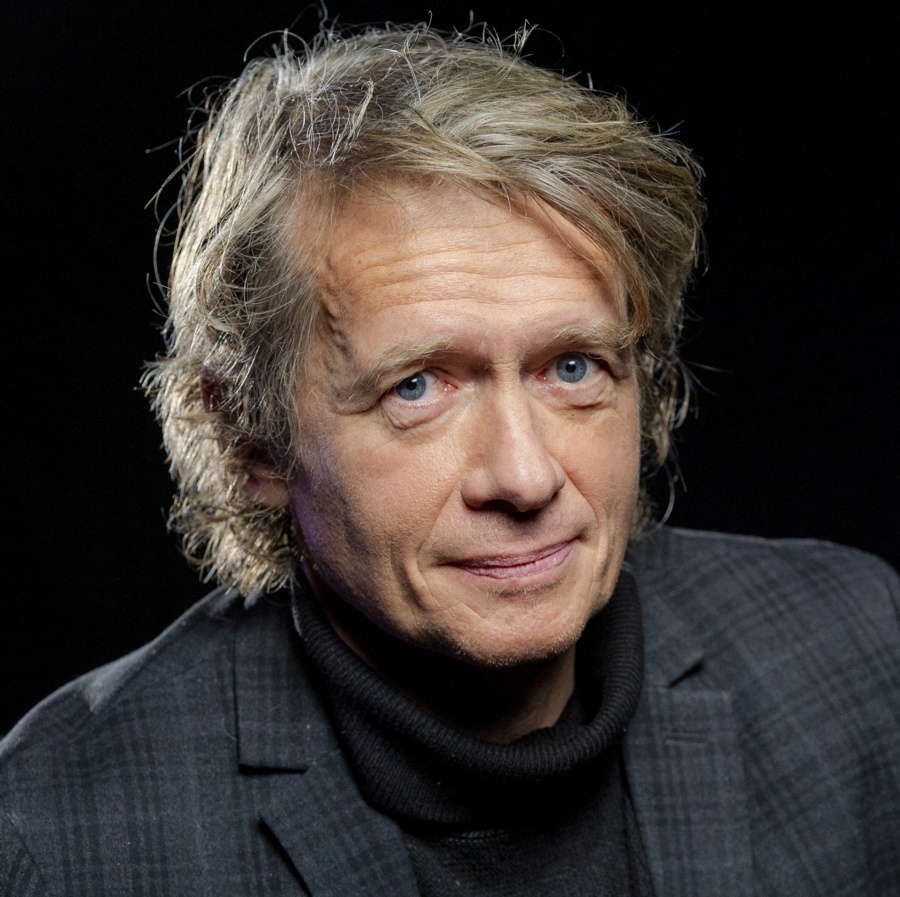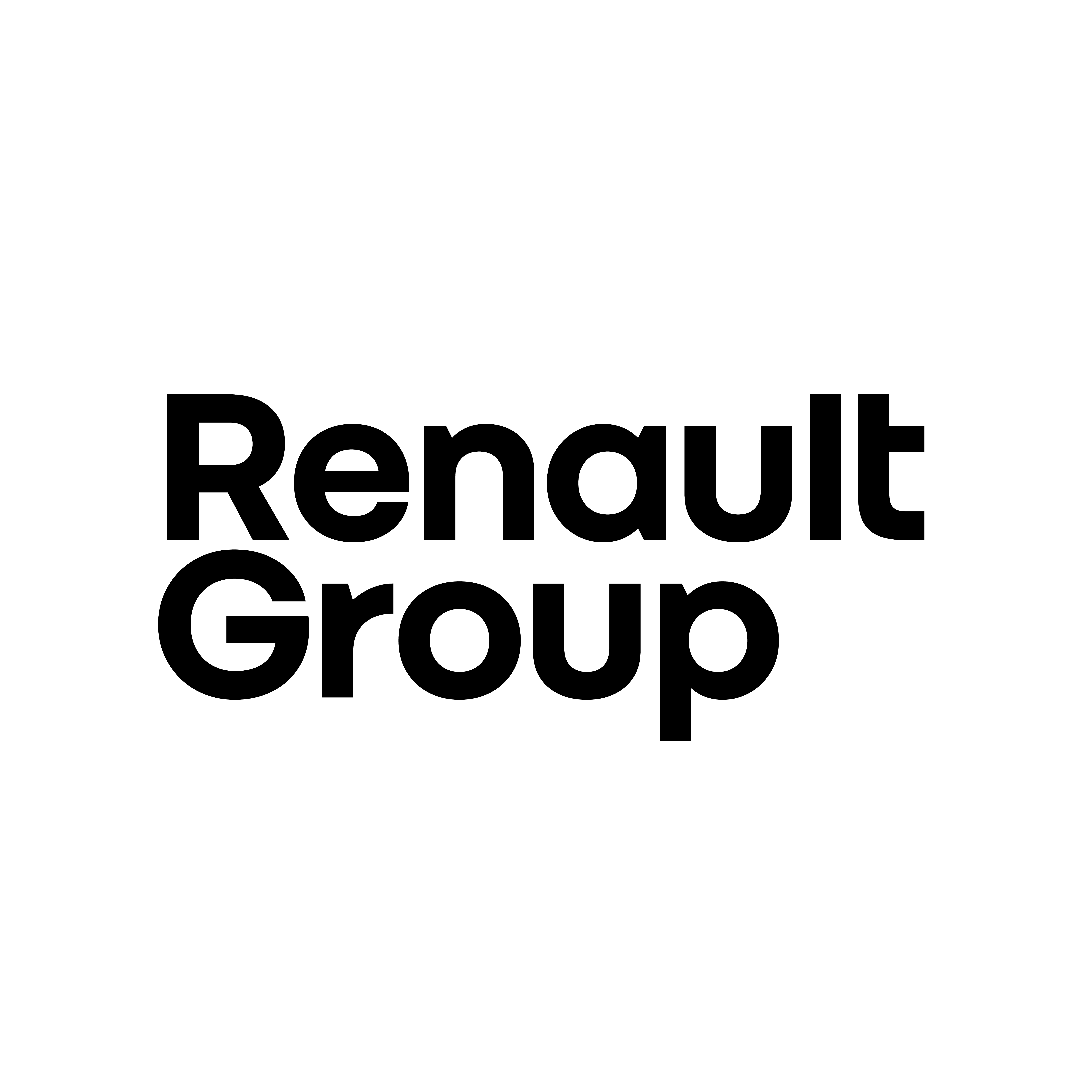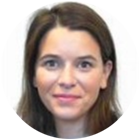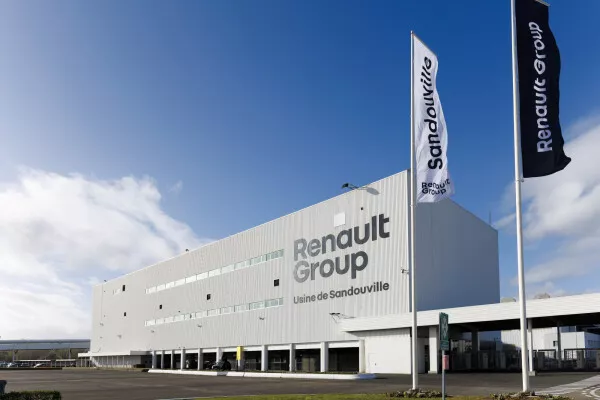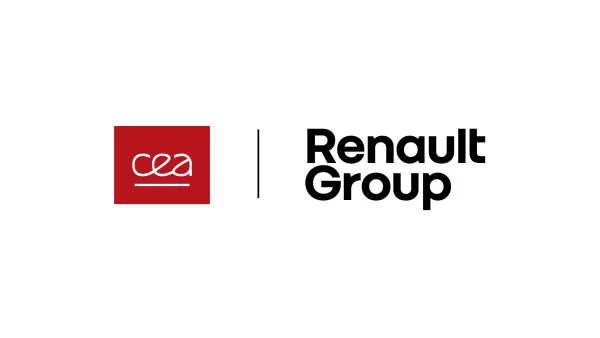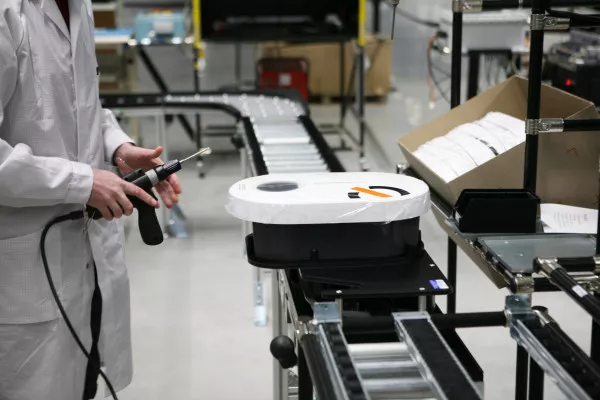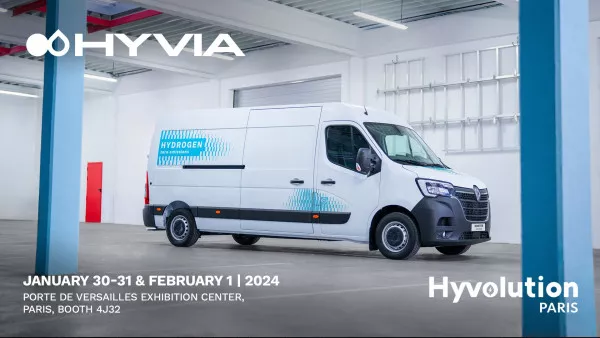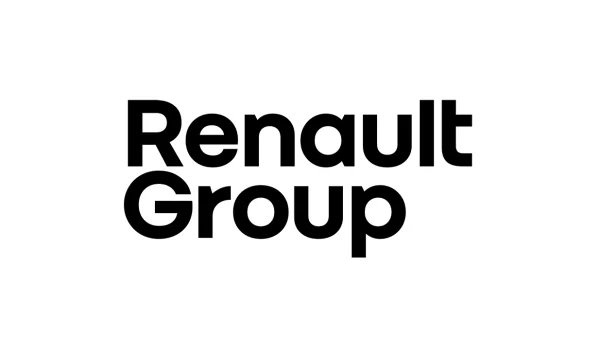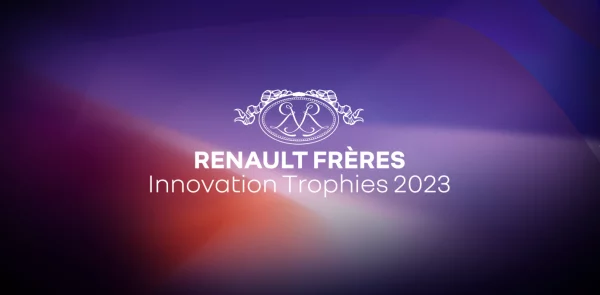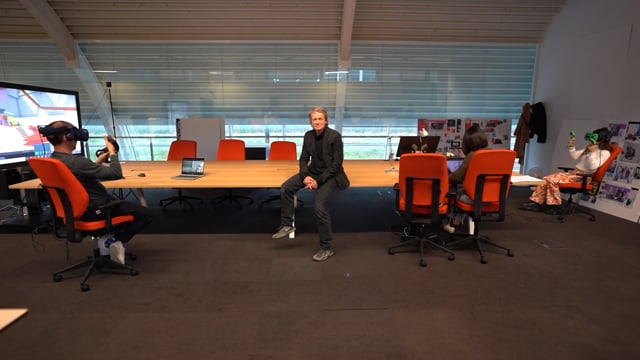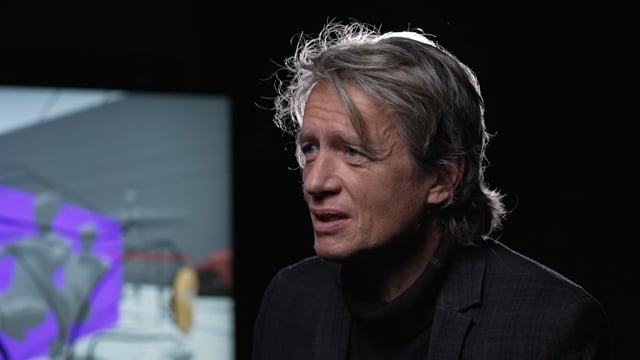3D sketching: a digital touch to every drawing
As is the case with film, video games, and landscape mapping, the past few decades has seen the automotive industry incorporate more technological advancements in 3D modelling to bring its projects to life. Nowadays, before a car can be sent to the production line, it must first be born in a 3D world. This mission is entrusted to designers, whose set of digital tools is constantly growing. One such tool involves 3D sketching – revolutionary technology that allows designers to draw with neither pencil nor drawing board. Welcome to the future!
18 January 2022 14:03
Technocentre (Guyancourt), 1st December 2021. A man, decked with a VR headset and a controller in each hand, stands in the middle of a room gesticulating wildly. He appears to be drawing invisible lines in the air around him. A curious scene that is clearly reminiscent of the world of virtual reality gaming. And yet, Udo – that's the man’s name – is not a gamer... he is a designer! And he is hard at work. His latest gadget? A program for 3D sketching; a drawing method currently being rolled out at Renault Group's Design division.
"With 3D sketching, you are immersed in a space where there are neither constraints and limits." Udo, Chief Designer
What does 3D sketching involve?
3D sketching is a form of intuitive technology that enables you to ‘draw in thin air’ all around you.
Draw in thin air? Pablo Picasso was already carrying out such experiments in 1949. The famous Spanish artist replaced pencil with cigarette lighter to perform his ‘dancing light’ pieces. These ephemeral drawings were immortalised by photographer Gjon Mili, and the technique was known as light painting (or light drawing). It was an art form that, even back then, saw ideas come to life out of thin air.
Today, 3D sketching is much the same idea, though minus the lighter and camera. The technique requires the use of a VR headset (virtual reality headset). Invented 50 years ago, it became more widespread about ten years ago, with consumer models for video game use hitting the market.
With the headset firmly on and plugged in, the designer is immersed in an entirely virtual 360° drawing studio. Using two controllers (one in each hand), they can then choose colours from a palette, draw lines, create shapes, fill surfaces, and much more. A computer program models and records each and every movement.

All one needs to do 3D sketching is a VR headset, two controllers, and an internet connection
Digital creative freedom that is almost limitless
Near the end of the 1990s, the work of designers had already been through a first transformation with the popularisation of drawing on digital tablets. Today, 3D sketching takes it a step further where designers no longer need a tablet, pencil, mouse, or even a desktop to work. Design is entering a new era: one where digital tools sit at the heart of automotive design.
"Renault Group has been harnessing digital tools for some time. Today marks the beginning of a new era for designers."
As the technology continues to improve, digitalisation gives designers a considerable amount of freedom tenfold and makes their projects even more accessible. It has never been easier to quickly whip up a 3D sketch, create perspective, model shapes – even on a 1:1 scale – or fill volumes. "It saves time," says Udo. "It takes at least four weeks to run a scan or data file through a machine, while everything here is in real time. That's a huge advantage." In short, 3D sketching makes it far easier to experiment with new ideas as they are so readily brought to life.
Only drawbacks: eye strain, headaches, and other back and joint pain experienced by some designers after prolonged use. "Drawing in 360° means you have to be in good shape and take breaks every hour," says Udo.
Engineers are already thinking about ways to make the experience more enjoyable and less restrictive. This includes making the headset lighter. For example, mixed reality headsets are being developed, so designers can draw in VR while still being able to see what is happening around them and interact with colleagues.


Two Renault Group designers working together on a 3D sketch in real time.
Collaboration 2.0
3D sketching adds another string to the designer's bow: colleagues can now work together at the same time, on the same project, regardless of the distance between them.
"As long as you have an Internet connection, geographical limitations are a thing of the past. You can feel like you’re together even if you’re actually thousands of miles apart," says Udo. Two designers can communicate with each other via the 3D sketching tool using earphones and a built-in microphone in the VR headset. They can then talk, share what they have each been doing on their own and even work together on joint projects. All without having to leave their home, offices, or wherever they may be in the world.
The outcome being that possibilities are endless, and people misunderstand each other far less often.
"Thanks to VR that acts as a gateway to a world of 3D, we can express ourselves more precisely."
But that's not all: the workflow has also been improved. First, models are made using 3D sketching before being exported as a digital file. The files can then be used by all those who are part of a vehicle’s design and production line. For example, designers can hand over a digital copy of their work to a modeler who makes a physical mock-up of the design or to an engineer who will estimate its feasibility.
Much like digital modelling, 3D sketching removes obstacles that may arise from miscommunication and gradually breaks down barriers between professions.
Example of a vehicle drawn with 3D sketching
The augmented designer’s new pencil
For some time now, digital drawing has offered those at Design the power to produce more iterations of their work, to work faster, and to go further, right from the outset. This trend has been taken up a notch thanks to 3D sketching. In addition to reducing costs and manufacturing times, this new technology makes it easier to view and review working sketches.
In concrete terms, designers can now hone in on specific details of their drawing with greater precision, experiment with different surface types, work with mirroring tools to stretch a 2D shape into 3D object, attain a better finish on sketches and models, present projects in real time, and even give life to their drawings thanks to the compatible nature of 3D printers.
Modern designers harness the numerous advantages of such technology, along with new skills and a wide range of tools to express their ideas and thus evolve into augmented designers.
"We will always need physical mock-ups of working designs because customers want to buy a real product, something they can touch and feel."
According to Udo, “While 3D sketching is yet another tool to be used, traditional methods still have a role to play." Digital and physical techniques go hand in hand. They each play their part in the car making process. Modelers continue to use plasticine to make models. An ideal material to use when working on the silhouette of a new model, they are essential in determining the success a design during the final stages of the design process. Similarly, 3D sketching is not a substitute for the designer's talent when it comes to drawing, a cornerstone of the design process.
3D sketching is already a crowd favourite in other industriesRenault Group designers aren’t the only ones to work with the new technology. Already used in many design schools, it is now used by designers working on motorcycles, sports shoes, bicycle helmets, and backpacks. It is fair to say that in the future it will be a key to the success of numerous projects in fields as varied as fashion, interior design, medicine, architecture, and video games. |
Renault Group is at the forefront of a mobility that is reinventing itself. Strengthened by its alliance with Nissan and Mitsubishi Motors, and its unique expertise in electrification, Renault Group comprises 5 complementary brands - Renault, Dacia, LADA, Alpine and Mobilize - offering sustainable and innovative mobility solutions to its customers. Established in more than 130 countries, the Group has sold 2.9 million vehicles in 2020. It employs more than 170,000 people who embody its Purpose every day, so that mobility brings people closer. Ready to pursue challenges both on the road and in competition, Renault Group is committed to an ambitious transformation that will generate value. This is centred on the development of new technologies and services, and a new range of even more competitive, balanced and electrified vehicles. In line with environmental challenges, the Group’s ambition is to achieve carbon neutrality in Europe by 2040. www.renaultgroup.com/en/
Media library (13)
- All (13)
- Images (11)
- Videos (2)
Renault Group is at the forefront of a mobility that is reinventing itself. Strengthened by its alliance with Nissan and Mitsubishi Motors, and its unique expertise in electrification, Renault Group comprises 5 complementary brands - Renault, Dacia, LADA, Alpine and Mobilize - offering sustainable and innovative mobility solutions to its customers. Established in more than 130 countries, the Group has sold 2.9 million vehicles in 2020. It employs more than 170,000 people who embody its Purpose every day, so that mobility brings people closer. Ready to pursue challenges both on the road and in competition, Renault Group is committed to an ambitious transformation that will generate value. This is centred on the development of new technologies and services, and a new range of even more competitive, balanced and electrified vehicles. In line with environmental challenges, the Group’s ambition is to achieve carbon neutrality in Europe by 2040. www.renaultgroup.com/en/
Related topics
